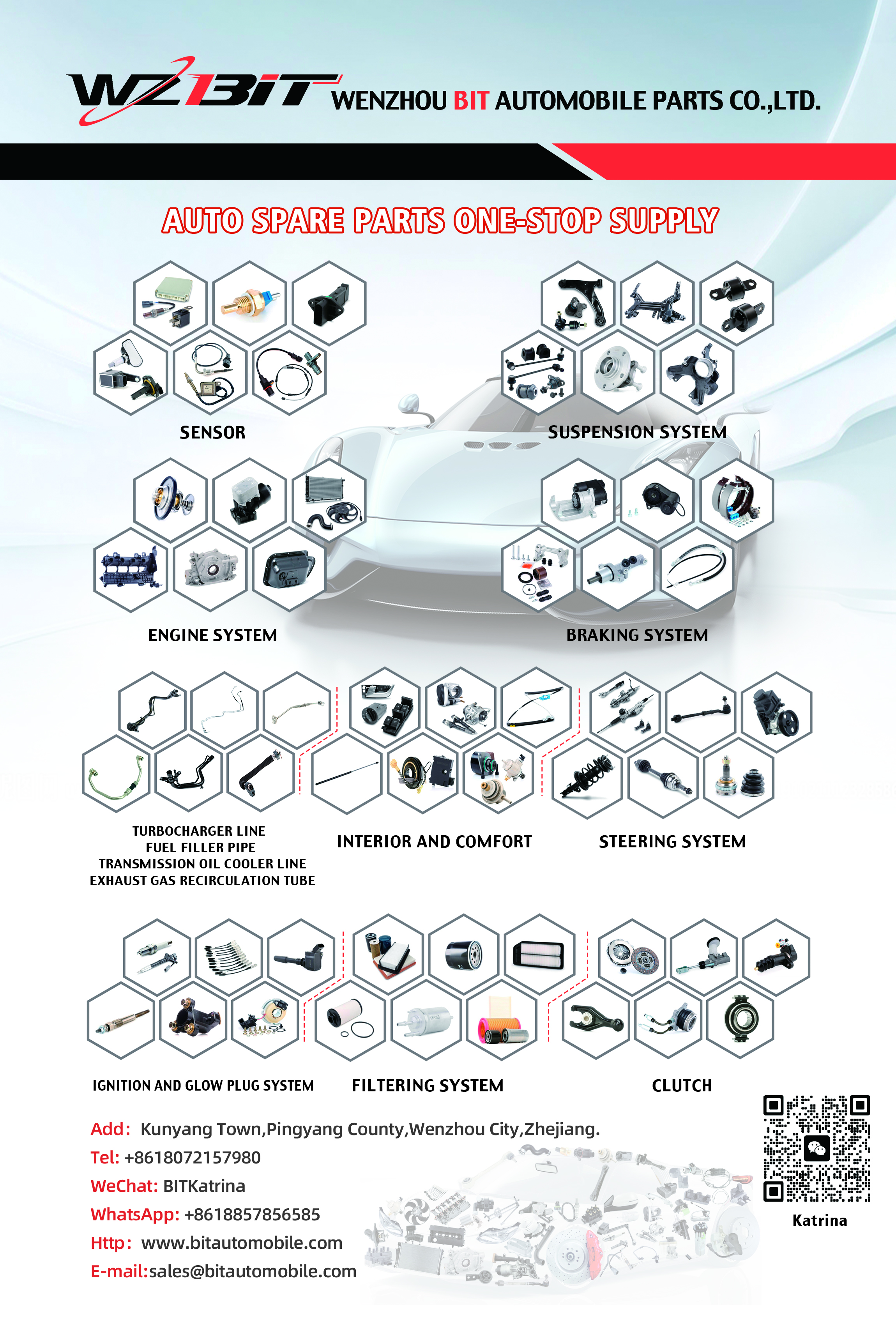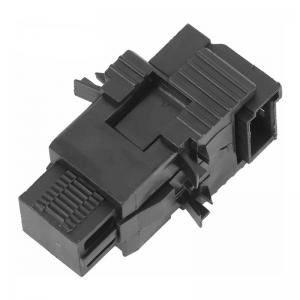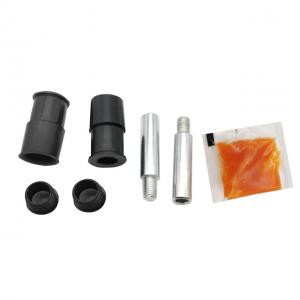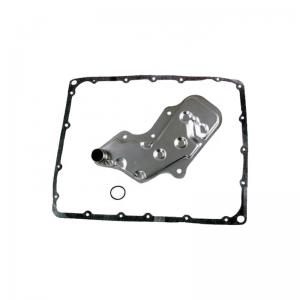Sensor, exhaust gas temperature

An exhaust gas temperature (EGT) sensor, also known as a exhaust temperature sensor or thermocouple, measures the temperature of the exhaust gases as they exit the engine's combustion chambers.

OE Number
| 8200872039 | 2263000Q1E |
| 8200929533 | 2263000Q1J |
Compatible Applications
DACIA Duster Off-Road (Year of Construction 10.2010 - 01.2018, 90 PS, Diesel)
DACIA Logan I Express (FS) (Year of Construction 05.2010 - ..., 75 - 88 PS, Diesel)
DACIA Logan I MCV (KS) (Year of Construction 05.2010 - ..., 75 - 88 PS, Diesel)
DACIA Logan I Pickup (US) (Year of Construction 05.2010 - ..., 75 - 88 PS, Diesel)
DACIA Logan I Saloon (LS) (Year of Construction 05.2010 - ..., 75 - 88 PS, Diesel)
DACIA Sandero I (SD) (Year of Construction 05.2010 - ..., 75 - 88 PS, Diesel)
NISSAN Cube (Z12) (Year of Construction 10.2009 - ..., 106 - 110 PS, Diesel)
NISSAN Juke (F15) (Year of Construction 06.2010 - ..., 110 PS, Diesel)
NISSAN Note I (E11, NE11) (Year of Construction 09.2010 - 06.2012, 90 PS, Diesel)
NISSAN NV200 / Evalia Minibus (M20) (Year of Construction 04.2011 - ..., 90 PS, Diesel)
NISSAN NV200 Box Body / Estate (M20) (Year of Construction 04.2011 - ..., 90 - 110 PS, Diesel)
NISSAN Qashqai / Qashqai+2 I (J10, NJ10) (Year of Construction 01.2010 - 12.2013, 110 PS, Diesel)
RENAULT Clio III Grandtour (Year of Construction 11.2007 - 12.2012, 75 - 103 PS, Diesel)
RENAULT Clio III Hatchback (BR0/1, CR0/1) (Year of Construction 06.2005 - 12.2014, 75 - 103 PS, Diesel)
RENAULT Fluence (L3_) (Year of Construction 02.2010 - ..., 90 - 110 PS, Diesel)
RENAULT Grand Scénic III (JZ) (Year of Construction 04.2009 - ..., 110 PS, Diesel)
RENAULT Kangoo II / Grand Kangoo (KW) (Year of Construction 02.2008 - ..., 75 - 103 PS, Diesel)
RENAULT Kangoo II Be Bop (KW) (Year of Construction 02.2009 - ..., 75 - 103 PS, Diesel)
RENAULT Kangoo II Express (FW) (Year of Construction 02.2008 - ..., 75 - 103 PS, Diesel)
RENAULT Laguna III Hatchback (BT) (Year of Construction 10.2007 - 12.2015, 110 PS, Diesel)
RENAULT Laguna III Sport Tourer (KT) (Year of Construction 10.2007 - 12.2015, 110 PS, Diesel)
RENAULT Latitude Saloon (Year of Construction 07.2010 - ..., 110 PS, Diesel)
RENAULT Megane CC (EZ) (Year of Construction 06.2010 - ..., 110 PS, Diesel)
RENAULT Megane III Coupe (DZ) (Year of Construction 11.2008 - ..., 90 - 110 PS, Diesel)
RENAULT Megane III Grandtour (KZ) (Year of Construction 02.2009 - ..., 90 - 110 PS, Diesel)
RENAULT Megane III Hatchback (BZ0/1) (Year of Construction 11.2008 - ..., 90 - 110 PS, Diesel)
RENAULT Modus / Grand Modus (F, JP) (Year of Construction 05.2007 - ..., 75 - 103 PS, Diesel)
RENAULT Scénic III (JZ0/1_) (Year of Construction 04.2009 - ..., 110 PS, Diesel)
RENAULT Twingo II Hatchback (Year of Construction 10.2010 - ..., 75 - 86 PS, Diesel)
Function
The primary function of an exhaust gas temperature sensor is to monitor the temperature of the exhaust gases. This information is crucial for several reasons:
- Engine Protection: Monitoring exhaust gas temperature helps prevent overheating of critical engine components, such as the turbocharger or catalytic converter.
- Optimization: EGT sensors assist in optimizing engine performance and fuel efficiency by providing data that can be used to adjust fuel injection timing and air-fuel ratios.
- Emissions Control: They play a role in controlling emissions by ensuring the engine operates within safe temperature limits, which helps reduce harmful emissions.
Construction
EGT sensors are typically located in the exhaust manifold or exhaust pipe close to the engine. They utilize a thermocouple or thermistor to measure the temperature of the exhaust gases. The sensor generates an electrical signal that varies with temperature, which is then sent to the engine control unit (ECU) for processing.
Importance
- Engine Safety: Monitoring exhaust gas temperatures prevents engine components from overheating, which could lead to premature wear or damage.
- Performance Optimization: EGT data helps optimize engine operation for improved efficiency and power output.
- Emissions Compliance: Ensuring exhaust gases are within safe temperature limits helps reduce emissions and comply with environmental regulations.
Maintenance
EGT sensors are exposed to high temperatures and harsh conditions in the exhaust system, which can lead to sensor degradation over time. Symptoms of a failing EGT sensor may include:
- Check Engine Light: Illuminated due to sensor malfunction or out-of-range readings.
- Reduced Performance: Incorrect EGT readings can affect engine performance and efficiency.
- Increased Emissions: Malfunctioning EGT sensors can lead to higher emissions levels.
Replacement
EGT sensors should be replaced according to manufacturer recommendations or if diagnostic tests indicate sensor failure. Replacement involves locating the sensor in the exhaust system, disconnecting electrical connectors, removing the old sensor, and installing a new sensor. Proper installation and calibration are crucial to ensure accurate temperature readings and optimal engine performance.
In summary
exhaust gas temperature sensors are critical components that monitor exhaust gas temperatures to protect engine components, optimize performance, and ensure compliance with emissions standards. Regular maintenance and timely replacement of EGT sensors are essential for maintaining vehicle reliability and efficiency.
Send your message to us:











